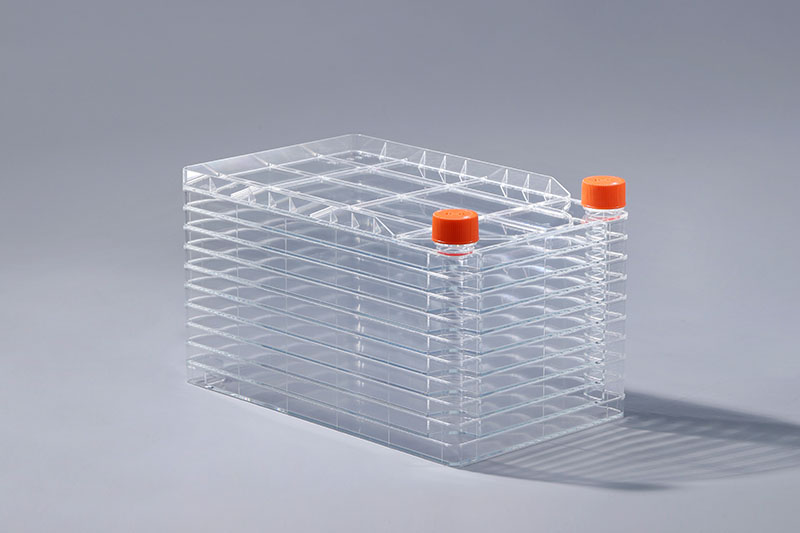In the large-scale cell culture, cell factory is an indispensable cell culture consumable. Cells have very strict requirements on the growth environment, so the consumables used need to be sterilized before they can be used. The commonly used sterilization method is irradiation sterilization. The use of this sterilization method has the following five advantages:
1. No pollution and no residue: Irradiation sterilization is different from chemical sterilization, which requires the addition of other components and does not produce radioactivity.
2. The sterilization effect is thorough: During the irradiation sterilization process of the cell factory, the gamma rays penetrate the goods in the irradiated cargo box, act on the microorganisms, directly or indirectly destroy the ribonucleic acid, proteins and enzymes of the microorganisms, thereby killing the microorganisms. Microorganisms, play the role of disinfection and sterilization.
3. Cold sterilization: Irradiation sterilization is a normal temperature sterilization method. Compared with high temperature and high pressure sterilization, irradiation sterilization can reduce the impact of high temperature on products.
4. The irradiation effect is stable: the environmental temperature, humidity and other factors have little effect on the irradiation sterilization effect.
5. No secondary contamination problem: The product can be sterilized after packaging. As long as the packaging is impermeable to bacteria, the quality can be guaranteed for a long time.
The above are the five advantages of irradiation sterilization in cell factories. In addition, irradiation technology also has the advantages of low energy consumption, fast sterilization speed, simple operation, no post-processing after sterilization, and can be used immediately. It is widely used in other fields.
The FAI climbed 5.9 percent year-on-year in the first 11 months of 2018, quickening from the 5.7-percent growth in Jan-Oct, the National Bureau of Statistics (NBS) said Friday in an online statement.
The key indicator of investment, dubbed a major growth driver, hit the bottom in August and has since started to rebound steadily.
In the face of emerging economic challenges home and abroad, China has stepped up efforts to stabilize investment, in particular rolling out measures to motivate private investors and channel funds into infrastructure.
Friday's data showed private investment, accounting for more than 60 percent of the total FAI, expanded by a brisk 8.7 percent.
NBS spokesperson Mao Shengyong said funds into weak economic links registered rapid increases as investment in environmental protection and agriculture jumped 42 percent and 12.5 percent respectively, much faster than the average.
In breakdown, investment in high-tech and equipment manufacturing remained vigorous with 16.1-percent and 11.6-percent increases respectively in the first 11 months. Infrastructure investment gained 3.7 percent, staying flat. Investment in property development rose 9.7 percent, also unchanged.
 English
English



















































